Huawei MateBook X Pro (2021) Review: A Sleek and Vibrant Notebook
by Dr. Ian Cutress on September 28, 2021 9:00 AM EST- Posted in
- Notebooks
- Intel
- Huawei
- Laptops
- Matebook X Pro
- Tiger Lake
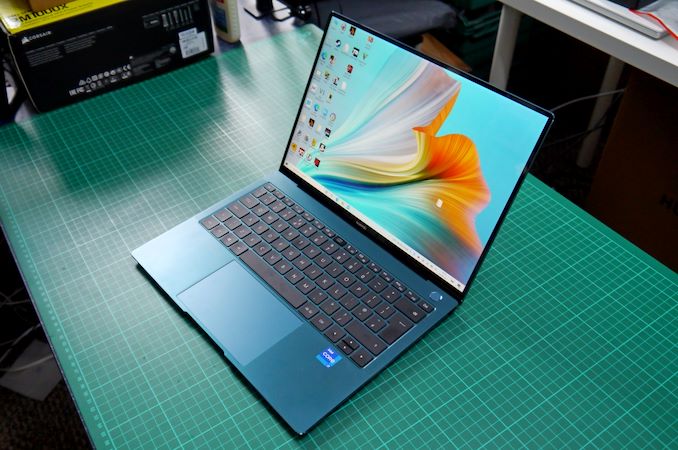
As a laptop vendor, Huawei is entering its fourth year. Relying on x86 silicon and a GPU here and there, one thing Huawei does well is the quality of the design. The company has transferred the knowhow developed over a decade of smartphones into something bigger, with a keyboard, running Windows. The latest MateBook X Pro 2021 edition we’re testing today equips an Intel 11th Gen Core i7 with one of the physically largest displays you can fit into a 14-inch device, and a brushed aluminium chassis that’s very smooth to the touch and an Emerald Green finish that really stands out.
Huawei Makes Laptops? Really?
Over the years that we have covered Huawei products, through the good and the bad, through the first attempts and halo devices, a main feature that’s hard to ignore is the design. After a decade of Huawei smartphones, we were introduced to the first 2-in-1 laptop products in 2017, and although well designed and comforting to handle, the user experience needed some work. But it wasn’t long before we got a Windows device that looked great with an experience to rival market veterans.
Enter the first generation MateBook 13, and it is easily one of the best laptops I’ve used as a 6-month travel work machine to date. Unfortunately due to some improvements Huawei wanted to introduce (like the recessed webcam, more on that later), the company quickly replaced it with a less inspiring configuration that wasn’t as well received. Huawei has traditionally gone with Intel in its systems, but was one of the first to partner with AMD when the AMD Mobile Ryzen became available – we saw Ryzen versions of its education model, albeit for China only.
Huawei’s laptop ambitions right now are in three main categories
- Education with the MateBook D 14, MateBook D 15, and MateBook D 16
- Portable with the MateBook 13, MateBook 14, and MateBook 16
- Professional with the MateBook X (13-inch) and MateBook X Pro (13.9-inch).
Those last two categories being aimed squarely at the traditional MacBook markets.
Today we’re testing the Huawei MateBook X Pro 2021 model, which features an Intel 11th Generation Tiger Lake Core i7 processor and uses integrated graphics, paired with 16 GB of LPDDR4X memory and a 512 GB NVMe SSD. Normally people might associate a Pro laptop with a discrete GPU included - in the 2020 model, Huawei used a 10th Gen processor with an NVIDIA MX250 discrete GPU, but that has been dropped in favour of Intel’s integrated Xe Graphics.
Huawei MateBook X Pro 2021: Hands On
When you first take a new laptop out of the box, after picking it apart from the Styrofoam and removing the protective plastic wrapping, you touch the chassis. For most devices, this is a mundane affair, as you’re touching plastic or something equally utilitarian. Higher cost devices will have an aluminium unibody, saving weight, or if you’re going for something even lighter, an expensive lithium-magnesium alloy can be an option. However, even with a metallic unibody design, not all are equal, and it comes down to how that chassis is treated, etched or finished, and treated as part of the design. With this MateBook, it has that touch that is very smooth but if you softly move your hand over it, you get a small vibration sensation. In my mind, it’s great. I’ve asked people if they feel the same thing. They have no idea what I’m going on about.
Opening the lid, we see a chiclet-style keyboard with a massive touchpad and a separate power button in the top right corner. In its MateBook designs, Huawei integrates the same high-speed Goodix fingerprint recognition sensor into the power button as it does with its smartphones, which has grown to be one of the easiest to use in the market with a fast response and near-perfect recognition.
The fact that this power button is a separate button entirely on the keyboard should not be understated. I loathe the in-keyboard power buttons that are often to the right of the delete key, as they get pressed way too often by accident. I also loathe designs with the power button on the side, because invariably when trying to move a laptop closer to see better, that button will always get pushed. Huawei has it in the correct position here, and it also comes with a small click to know when it’s pressed. You don’t need to click it to get the fingerprint sensor to work, which is a bonus.
The large touchpad is Huawei’s latest iteration, and having had some dodgy trackpads in the past, this one works well and is easy to use with a good palm rejection and a slight click on both the left and right for the respective mouse button presses. Gestures sometimes took a couple of tries to activate, but no more so than most other premium touchpads I’ve tested. The touchpad doesn’t have the same feel as the chassis that I mention above, which is perhaps a good thing – I found it very easy to be accurate with mouse movements with the touchpad too.
They keyboard uses a slight bevel on each key to make it easier to hone in on the chiclet style, however the half-size up/down arrows aren’t always fun to play with. As with most laptops, there is a second function for the top row of F keys, and the Huawei design allows the user to operate with the Fn/Function key permanently on or off, and selecting between the two is just a simple press. On other laptops I’ve noticed that sometimes requires a BIOS option change, so the fact that this is on the keyboard helps. Every key is white backlit as well. Perhaps the oddest different to most laptops is where the camera sits.
Since 2018, Huawei has decided to remove the built-in webcam from the chassis lid. We normally find it above the display, but that either compromises the look of the display, or you end up with a really bad and tiny camera. Some vendors remove it entirely, but Huawei has relocated it to the Function key row. It sits just below the key between F6 and F7, and which you click it, it springs up from its spot and points up at you.
This fulfils the tick on the spreadsheet of having a built-in camera. However, the camera isn’t great: the quality is still a standard 720p camera that you would find in the chassis lid on other laptops, except this one points right up at your chin. And up your nose. I don’t know about you, but having to have critical meetings while looking up at someone’s nose hair isn’t the greatest experience. Usually I recommend that if you are going to have a video call with a laptop web-cam embedded in the display, then put the laptop up on some books, so at least the camera is at eye-level rather than looking up. The Huawei solution does the reverse, and makes it a poor experience for all concerned. I would suggest looking at external cameras here.
But the benefit of removing the webcam from the chassis is that Huawei has fitted one of the biggest 14-inch class displays to a 13.9-inch notebook. Huawei lists the screen-to-body ratio as 91%, and the LTPS display has a 3000x2000 resolution in a 3:2 aspect ratio, giving it 260 pixels per inch. The official specifications for the display rate it as at 450 nits brightness, with a 1500:1 contrast ratio with 100% sRGB gamut. The display also supports 10-point multi-touch – we’ll go more into verifying these claims during our display testing later in the review. But as with many devices that look great when the screen is right up against the display, it’s hard not to be astounded by how much display real estate there is here.
For connectivity, on the left the MateBook X Pro 2021 has a 3.5mm audio jack and two USB Type-C ports (support for dual 4K60 display, 50W charging, or data). On the right is a single USB 3.2 Type-A port. Inside is a Wi-Fi 6 controller with BT5.1 support, as well as a Huawei Share NFC module. Users with a Huawei smartphone that supports Huawei Share can dock it to the laptop wirelessly to share the displays with each other, use the phone as a remote control, use the laptop to take and make calls, or an easy way to share pictures and videos in either direction.
| Huawei Matebook X Pro Specifications | |||||
| AnandTech | 2018 | 2019 | 2020 | 2021 | |
| Processor | CPU | i7-8550U | i7-8565U | i7-10510U | i7-1165G7 |
| Cores | 4C + HT | 4C + HT | 4C + HT | 4C + HT | |
| TDP | 15 W | 15 W | 15 W | 15 W | |
| Base Freq | 1.8 GHz | 1.8 GHz | 1.8 GHz | 1.7 GHz | |
| Turbo Freq | 4.0 GHz | 4.6 GHz | 4.9 GHz | 4.7 GHz | |
| L3 | 8 MB | 8 MB | 8 MB | 12 MB | |
| uArch | Kaby | Whiskey | Comet | Tiger | |
| Graphics | NVIDIA MX150 2GB GDDR5 |
NVIDIA MX250 2 GB GDDR5 |
Xe-LP 96 EUs |
||
| Display | 13.9-inch, 3000x2000 100% sRGB, LTPS Panel 450 nits. 1500:1 contrast 10-point touch |
||||
| DRAM | 16GB LPDDR3 |
16GB LPDDR3 |
16GB LPDDR3 | 16GB LPDDR4X | |
| Storage | 512 GB NVMe PCIe 3.0 x4 |
512 GB NVMe PCIe 3.0 x4 |
512 GB NVMe PCIe 3.0 x4 |
1 TB NVMe PCIe 3.0 x4 |
|
| Wireless | Wi-Fi 5 | Wi-Fi 5 | Wi-Fi 5 | Wi-Fi 6 | |
| Camera | Spring Latch, 1MP | ||||
| Battery | 57.4 Wh | 57.4 Wh | 56 Wh | 56 Wh | |
| Weight | 1.33 kg | 1.33 kg | 1.33 kg | 1.33 kg | |
| Price | ¬$1800 | ~$1810 | ~$1900 | ~$1500 | |
Inside our model is the Intel Core i7-1165G7, the entry level Core i7 but with the biggest Xe graphics option, which is paired with 16 GB of LPDDR4X-4266 and a 1 TB Samsung PM981a NVMe SSD. The 56 Wh battery is rated for 10 hours of local video playback, which we’ve tested later in the review. At 1.33 kg (2.9 lbs), the metal unibody design does make it light for its 13.9-inch laptop size. Alongside the Emerald Green color of our unit, Huawei also offers a Space Grey. Our device shipped with Windows 10 Home, however a free upgrade to Windows 11 will be rolled out in due course.
Other features of the notebook include a dual Shark Fin fan design inside the chassis, so even without a discrete GPU, the cooling is sufficient and designed to be quiet. There is also a quad-speaker design, as well as two front facing microphones.
Over the next few pages, we’ll cover the performance, display, battery life, charging, and other aspects of the system.


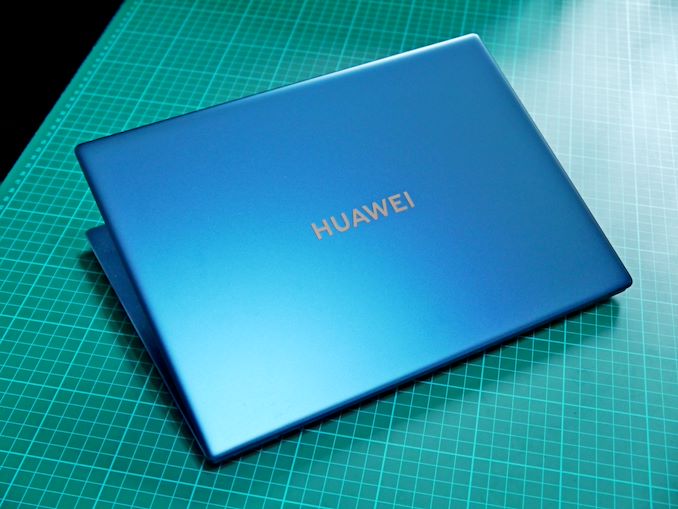


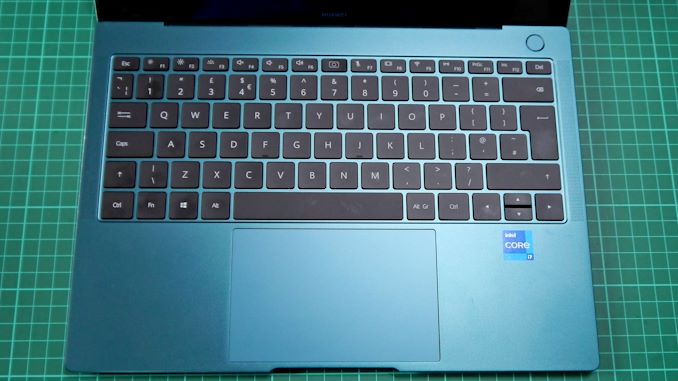
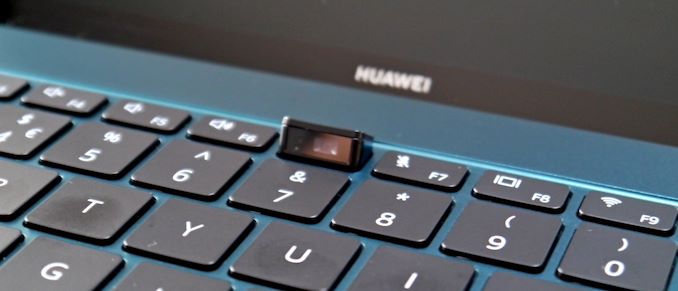
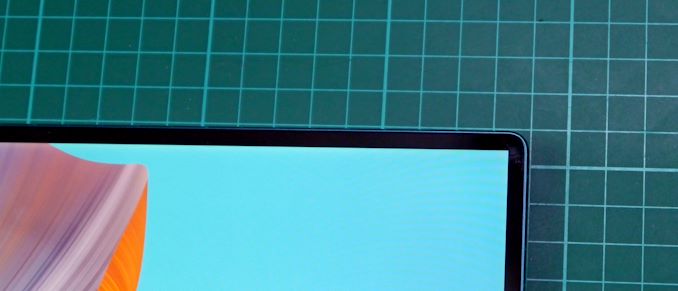











84 Comments
View All Comments
dontlistentome - Wednesday, September 29, 2021 - link
In the UK at least Lenovo are awful re stock. Like you it showed 2-3 weeks delivery. I ordered 5 at 4.30pm and they arrived the next morning. I even spoke to their business sales team (LenovoPro) who had no idea of leadtimes or stock level. Just how many sales are they losing?eek2121 - Tuesday, September 28, 2021 - link
Our software does not work on an M1 Mac. They won't be firing me any time soon. They would fire you, however, if you pushed us moving to M1 Macs since our company would not be able to get work done. The estimated cost of moving our software to an ARM compatible solution is 1.1 million dollars. Our software is used by governments around the world. Those governments ALL use x86...we've not had a single request for an ARM port, M1 or otherwise. That includes the 0.45% of users that use a Mac.m00bee - Tuesday, September 28, 2021 - link
Most proletary office software doesn't run om macs, at least not on my office.sonny73n - Wednesday, September 29, 2021 - link
@lemurbuttonThe only thing you'll bite is your tongue or the dirt. I've been in IT mostly in networking for over 25 years with a computer degree. I've had 1000s of clients and I haven't seen anyone use a Mac for work. So my conclusion is that you're just a troll spewing craps. I won't waste any more of my time with you.
star-affinity - Saturday, October 2, 2021 - link
@sonny73nI've also been in IT for almost 25 years and Macs has been a part of businesses in parallel with all non-Apple computers where I've worked. It all depends on what the area of work done with the computers. For graphical, typography and design related stuff Macs have often been used while more ”business” stuff such as finance and ”office stuff” has been more of a Windows thing.
gund8912 - Monday, October 4, 2021 - link
Google has been using exclusively MacBook pros for work, Oracle is offering people MacBook pros when employees upgrade hardware. So almost everything runs on MacOS except few programs (outliers), Apple just introduced ARM Macs will take time to port everything.Windows laptops and Macs have their own advantages.
But for me battery life, trackpad, MacOS work flow/UI are great compared to Windows laptops.
Linustechtips12 - Wednesday, September 29, 2021 - link
I would love to hear you explain to me why pages is better than word or google docs online or would you care to explain why most of the world runs windows and isn't macOS the "easy, clean,bloat-free, anyone can do it" kinda os have you ever even tried to do split-screen on a mac, don't even get me started on "system preferences" horrible layout compared to windows even windows search in windows 11 is fairly competitive compared to spotlight and that's on a still beta OS.star-affinity - Saturday, October 2, 2021 - link
I think Pages is much better than Word or Google Docs when it comes to doing page layout work.Interesting, I don't see how System Preferences is horrible in layout compared to Settings in Windows. And what about having to user interfaces for the settings like it has been in Windows 10 – the ”classic” UI and the ”modern”. If that isn't messy and confusing I don't know what. We also have the fact that most third party apps have different ways of doing the user interface – there is no coherence and many apps still looks like they are designed for Windows 95 or Windows XP.
Good if Windows 11 has a search that is competitive with Spotlight – about time. :D
Agree on the split screen – Windows has better built-in window management than macOS. But I just install the free and open source Rectangle and things are fine: https://rectangleapp.com/
gund8912 - Monday, October 4, 2021 - link
Split screen is easy, what are you talking about ?Did you ever try to switch between virtual desktops in windows how awful it is ? I never used multiple virtual desktops on Windows because it was un intuitive to use, I use it all the time now on MBP.
Kuhar - Wednesday, September 29, 2021 - link
Haha, just be careful not to get a single hair stuck between your screen and your keyboard on MBA... it might break. So fragile, so useless. On the other side you can throw X1C from your desk and it will just continue working with whatever. One could go on and on and on but there is no way to change simple minded fanboy.